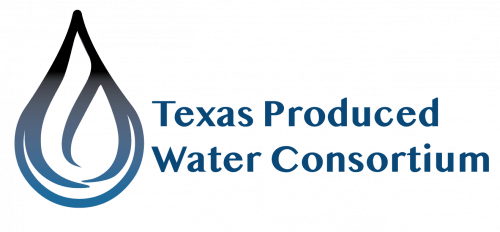Executive Director, Texas Produced Water Consortium
In this issue’s Q&A, Texas+Water Editor-in-Chief, Dr. Todd Votteler, interviews Rusty Smith, Executive Director of the Texas Produced Water Consortium.
Rusty Smith, the inaugural Director of the Texas Produced Water Consortium, brings to the group a unique blend of experience in agriculture, natural resources, oil and gas, and policy in both the public and private sectors.
Smith worked in both chambers of the Texas Legislature, most notably serving as Director for the Texas Senate Committee on Agriculture, Water, and Rural Affairs for Chairman Charles Perry, before becoming Director of Government and Regulatory Affairs for the Texas Independent Producers and Royalty Owners Association (TIPRO). Following his time with TIPRO, he moved back to Lubbock and joined the Lubbock Economic Development Alliance, focusing on business recruitment and innovation.
A native West Texan, Smith earned a Bachelor of Science from Texas A&M University and a Master of Business Administration from Texas Tech University.
What is produced water, and how much of it do we have in Texas?
Produced water is water generated through oil and gas production activities, which can include water that is naturally present in the formation where production is occurring as well as water that is injected in order to stimulate production. This is further categorized into “flowback water,” or water that returns to the surface during the first few weeks after being used for the initial fracturing of the well, and the remaining “produced water” that is collected along with oil and gas over the life of that well.
Estimates of produced water in Texas obviously vary year by year, depending on the amount of production occurring as well as the geography of the formation in which production is occurring. For example, we have seen scenarios where the barrels of water to oil ratio for production in the Permian Basin can average around 7:1, while the same water to oil ratio for the Eagle Ford Shale may only average closer to 1:1. To put that in context: In 2020, total oil production for the state of Texas was over 1.7 billion barrels; when that’s calculated out, you can see that Texas had the potential for upwards of a million acre-feet of produced water that year alone. To put it in further perspective, the 2022 Texas State Water Plan produced by the Texas Water Development Board estimates that by 2070 the state will need 6.9 million acre-feet of additional water supplies. While treated produced water may not cover that entire deficit, if we were able to use it for a more beneficial purpose beyond industry reuse and injection, it could play a crucial role in meeting our future water needs.
The most common method of managing produced water is disposal by underground injection, which known to cause earthquakes in some oil-producing regions. Does this, coupled with the scarcity and expense of water in some oil- and gas-producing regions, provide strong incentives to find ways to recycle produced water for hydraulic fracturing or for some alternative use?
The oil and gas industry has already made tremendous strides in the recycle and reuse of produced water for production activities. While that technology may still continue to improve marginally over time, direct industry reuse of produced water is not going to be our main focus. It’s the economics of treatment and distribution for that next frontier, finding more technologically, economically, and environmentally viable beneficial uses, that is at the heart of the work of the Consortium. There are numerous external factors that drive those economics: Regulations, production fluctuations, water availability, and social responsibility are among the drivers that we will take into consideration as we study each possible future use.
Earlier this year, State Senator Charles Perry introduced Senate Bill 601, to create the Texas Produced Water Consortium (Consortium). The bill was passed by the 87th Texas Legislature and then signed into law by Governor Greg Abbott. The Consortium is located at Texas Tech University’s Lubbock campus, and Venki Uddameri, Ph.D., P.E., Director of the Texas Tech Water Resources Center, Eric Bernard, Chair of Texas Tech’s Department of Landscape Architecture, and Marshall Watson, Ph.D., P.E., Chair of Texas Tech’s Department of Petroleum Engineering were selected as Faculty Co-Directors. Why did the Texas Legislature create the Consortium and what will it be doing?
I appreciate the acknowledgment of the Faculty Co-Directors and would like to thoroughly emphasize their critical involvement: Drs. Uddameri, Bernard, and Watson, along with our economics lead, Dr. Bradley Ewing, and faculty advisors, Drs. Danny Reible, Christy Bratcher, and Rajesh Khare here at Texas Tech, represent a broad spectrum of knowledge and experience that is vital to the work and success of this Consortium. The Consortium and Texas Tech are immensely lucky to have their contributions.
From my perspective, I believe the Texas Legislature created the Consortium as a continuation of their efforts to identify ways to meet our future water supply needs. Chairman Perry has long been an advocate focused on the issue of our water security, and Senate Bill 601 — the Consortium — is just the latest iteration in the multitude of solutions being considered by our elected officials. Our purpose is also clearly set in statute: the Consortium is created to bring together information resources to study the economics, technology, and environmental and public health considerations related to beneficial uses of produced water.

What are some of the potential uses of produced water that the Consortium will be examining?
Nothing should be off the table when it comes to considering and researching beneficial uses of produced water (or brackish or any other new sources of water for that matter). While there may be end uses that are ultimately not economically feasible or otherwise not currently recommended given the limitations of the available technology, the Consortium’s duty as researchers and scientists is the pursuit of knowledge. This includes studying its potential for use in construction operations, electric generation, agriculture, streamflow augmentation, and potable water use/consumption, to name a few.
The water used for hydraulic fracturing can contain added chemicals that are protected by trade secrets or intellectual property law, which means that the public doesn’t know all the chemicals that are part of the produced water. Given this, how will you determine whether produced water is suitable for human consumption or for use by irrigated agriculture?
One of the major facets of the Consortium that we are trying to structure is the ability to partner with industry to gain access to proprietary data that can better inform our research into technologies to treat produced water and the resulting economics of accessing and using those technologies on a scalable level. We already have provisions in our first-year membership agreement that address the protection of any confidential/proprietary information that is shared between members and the Consortium, so our hope is that all members will feel encouraged to help bolster our data resources to adequately inform our research and findings.
New Mexico has created a Produced Water Research Consortium that is a collaboration between the New Mexico Environment Department and New Mexico State University. Will the Texas and New Mexico consortiums be working together on any produced water issues?
How can our readers find out more about the Consortium and its work?
The best place to start is by visiting our website: www.txpwc.ttu.edu. We’re adding more to the website constantly and will be making it more robust in the coming months. Furthermore, I would encourage any interested stakeholders to email the Consortium at txpwc@ttu.edu to learn more about becoming a member, engaging in our subcommittee discussions, and working with us on this incredibly important issue.
Join Our Mailing List
Subscribe to Texas+Water and stay updated on the spectrum of Texas water issues including science, policy, and law.

